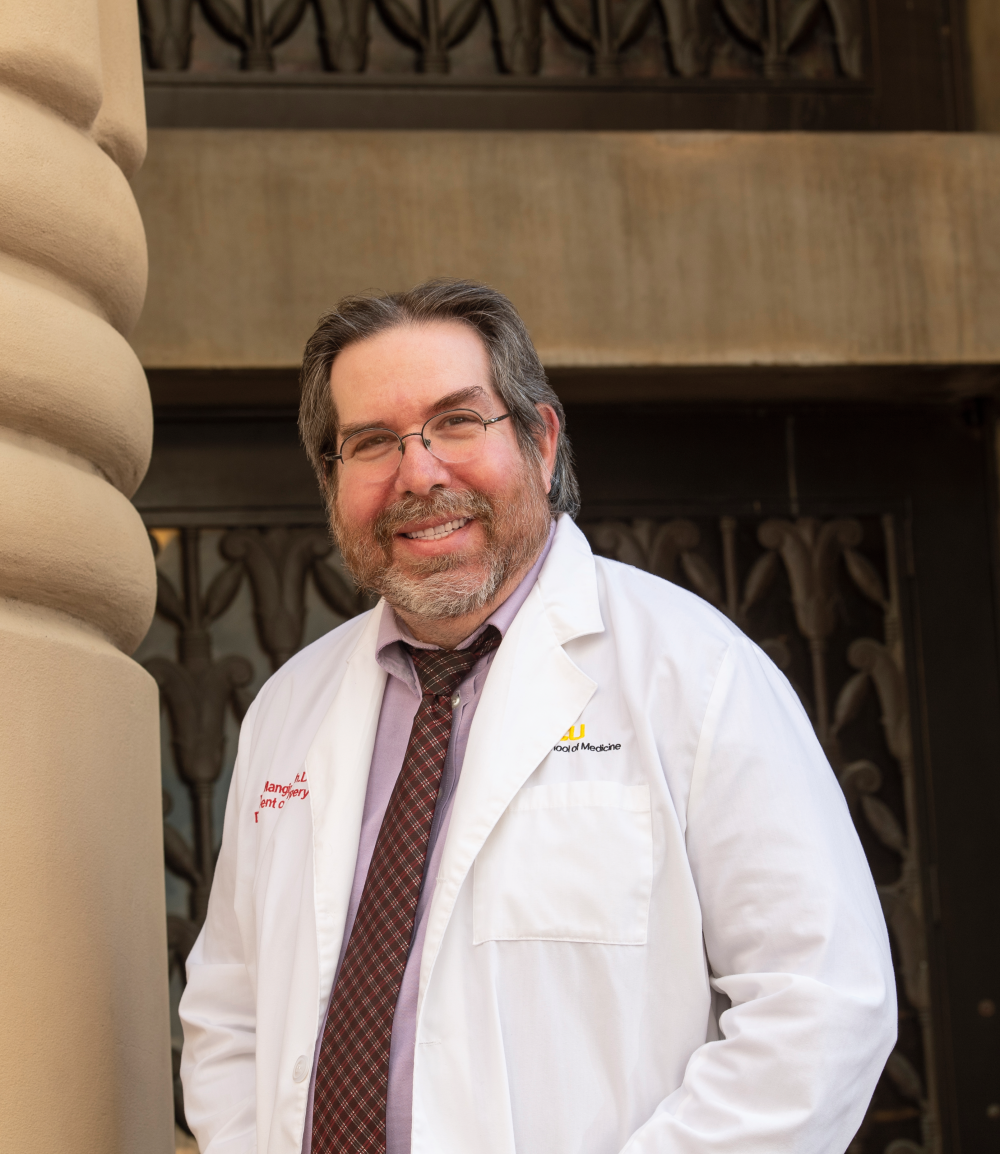
Buying Time in Trauma with a New Solution
Editor’s Note: This is an excerpt of a feature that appeared in the summer 2021 issue of NEXT magazine. Our online version has the full article and more stories about innovative research happening on the MCV Campus.
***
Untangling the effects of trauma on the body takes time, a precious commodity in short supply in the minutes after a car crash or a battlefield injury. In those harrowing moments, preventing the body from the ravages of traumatic shock is often the first major hope for survival. Keeping at bay the body’s unfettered inflammation response is critical to ensuring patients do not deteriorate before receiving acute care — whether a few exits down the interstate or a flight through remote and mountainous areas across the world.
Time may not be often on the patient’s side in these serious cases, but a solution discovered by one VCU Health researcher is showing promise for helping stabilize trauma victims after those harrowing moments and allowing them to be transported to the critical care they need.
When Martin Mangino, Ph.D., and his colleagues discovered a chemical compound while seeking a way to better preserve organs for transplants, he quickly recognized its potential to have other lifesaving uses.

Dr. Mangino, a professor in the Department of Surgery at the VCU School of Medicine, realized the synthetic solution that his team created using this chemical compound could help stabilize people in shock who are suffering from dangerously low circulation, whether it’s from loss of blood, illness or another injury. The U.S. military, seeking ways to improve outcomes for soldiers facing battlefield trauma, quickly became interested in the solution’s possible applications in the field.
This solution can help the body increase tissue perfusion — the microscopic distribution of blood flow into the body’s tissues, including its vital organs, which enables oxygen exchange — in situations where a person is bleeding profusely or has a low volume of blood.
“When you lose a lot of blood, if you’re out on a battlefield or you’re on I-95 and you’re bleeding out, you don’t have blood flow getting to your tissues where oxygen exchange can occur,” Dr. Mangino said. “What this compound does is, even under very low volume conditions, it pulls water out of the cells and puts it back into the capillary spaces, which increases tissue perfusion.”
This stable, crystallized solution that Mangino’s team discovered is called polyethylene glycol-20k IV solution or “PEG-20k.” It’s intended to be more portable, when used in small volumes, and stable so military field medics and emergency medical technicians can use it without refrigeration, unlike blood products. What laxatives do for the intestines — pulling water back to speed up the body’s intestinal transit while keeping pressure stable inside the body — this solution could do for the bloodstream.
Better Than Blood
When Dr. Mangino began developing PEG-20k for the U.S. Department of Defense, he expected it could work as well as whole blood. But in a paper published in 2020 in the Annals of Surgery, lead authors Jad Khoraki, M.D., a VCU Department of Surgery postdoctoral fellow, and Niluka Wickramaratne, M.D., a VCU Health surgery resident, found that PEG-20k significantly increased the rate of survival.
Dr. Mangino, a senior co-author on the paper, said that while the solution is not a blood substitute, it could significantly enhance the effectiveness of whole blood transfusions and help patients in life-threatening situations survive longer. As a result, a patient is likely to survive transport and arrive in better condition at a medical facility for definitive medical or surgical treatment. For armed forces members, where a field hospital could be hundreds of miles away, this could mean the difference between life and death.
“This buys you tremendous amounts of time,” Dr. Mangino said. “Instead of hours, it now buys you maybe close to a day to get somebody off that mountaintop [where they’ve been injured] and to get them to definitive care where they can undergo surgery and other resuscitation. So this buys you time, and it also increases the quality of the patient so that they’re in better shape when you deliver definitive care.”
Dr. Mangino has received more than $12 million in funding from the Department of Defense since 2012 to conduct this research and is currently doing further studies on the solution’s potential uses for critical illness in the intensive care unit and for spinal cord injuries and traumatic brain injuries. The National Institute of General Medical Sciences, a division of the National Institutes of Health, has also contributed funding to his research projects on the basic microcirculatory mechanisms of action of PEG-20k.
How PEG-20k Works
When the solution is administered to a person in shock, it prevents oxygen-deprived cells from swelling by pulling water from the body’s cells back into the blood vessels to increase circulation. This helps the circulatory system deliver enough oxygen to the major organs when someone has lost a lot of blood.
On top of helping patients in shock, Dr. Mangino said the solution could have potential uses for patients with several other conditions, such as compartment syndrome, ICU care or other traumatic injuries.
Loren Liebrecht, M.D., a postdoctoral scholar in the Mangino lab working on the project, developed the concept called “PEG-first,” where a medic could give a patient polyethylene glycol solution first, and then the amount of whole blood the patient would need afterward is considerably less, Dr. Mangino explained.
“We see all sorts of uses for it,” Dr. Mangino said of PEG-20k. “It can expand the blood supply so you don’t need a lot of red blood cell products when you use it first. We need to do more experiments to actually determine the exact magnitude of the savings, but we can probably cut red blood cell product use in half by using polyethylene glycol first in certain settings.”
‘Seemingly Simple Solution’ Could Save Millions
When Dr. Mangino decided he wanted to pursue getting this solution into the hands of doctors and patients as soon as he could, he approached VCU’s Innovation Gateway, a division of the Office of the Vice President for Research and Innovation, to help bring his solution to the public. Innovation Gateway decided the best path was to find an experienced entrepreneur to serve as an executive-in-residence to commercialize the product.
“VCU Innovation Gateway worked with Dr. Mangino for over eight years to find the right partner to commercialize this technology,” said Magdalena Morgan, Ph.D., assistant director of Innovation Gateway. “To see this project licensed to a company and on the path to commercialization is deeply moving. Such a seemingly simple solution could save the lives of millions of people.”
Now, Mangino and his business partner Gerard Eldering, a Virginia-based entrepreneur, have collaborated, creating Perfusion Medical LLC to bring the solution to market. Their company is starting the process of conducting trials necessary to get FDA approval for the solution to be available to patients. Dr. Mangino said he’s gotten feedback from surgeons who are eager to use the solution, once the FDA gives the go-ahead.
“This solution has the potential to revolutionize trauma medicine, assisting in emergency situations where blood products are scarce,” said Peter Buckley, M.D., dean of the VCU School of Medicine. “We are grateful for Dr. Mangino and his team’s efforts over the past decade to engage in research that could help health professionals stabilize patients in shock.”
If you would like to support Dr. Mangino’s research, please contact Brian Thomas, vice president and chief development officer for the MCV Foundation.



